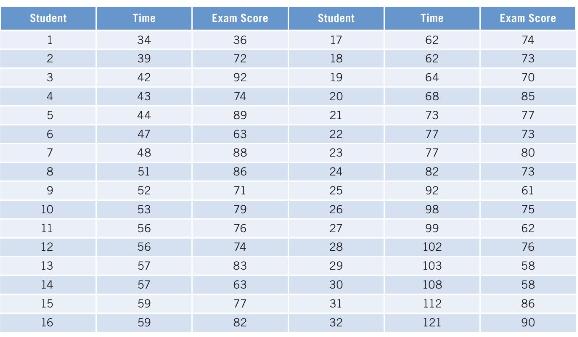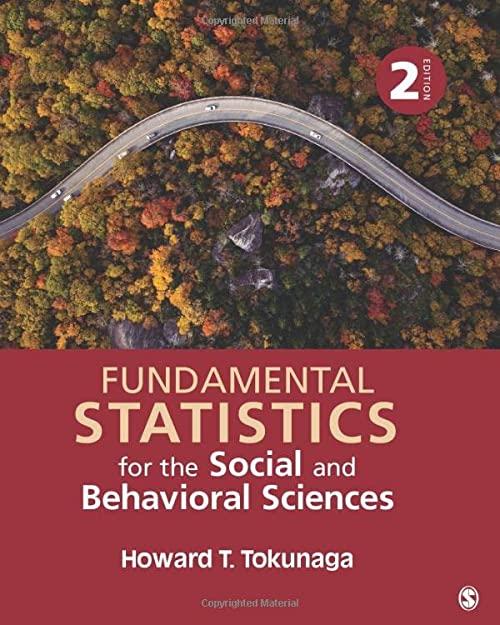Earlier in this chapter, we discussed a study that examined the relationship between the amount of time
Question:
Earlier in this chapter, we discussed a study that examined the relationship between the amount of time students take to complete a test and their scores on the test (Herman, 1997). The two variables in this study were Time (the number of minutes taken by each student to finish the examination) and Exam score (the number of correct answers for each student, ranging from 0 to 100). The researcher in this study wished to test the hypothesis that the more time students take to finish an exam, the lower their score on the exam. In other words, there is a negative relationship between Time and Exam score. The data for the 32 students in this study are listed below (note that the scatterplot and descriptive statistics for this data were provided earlier in this chapter):
a. State the null and alternative hypotheses \(\left(\mathrm{H}_{0}\right.\) and \(\left.\mathrm{H}_{1}\right)\) (use a nondirectional \(\left.\mathrm{H}_{1}\right)\).
b. Make a decision about the null hypothesis.
(1) Calculate the degrees of freedom \((d f)\).
(2) Set alpha \((\alpha)\), identify the critical values, and state a decision rule.
(3) Calculate a statistic: Pearson correlation \((r)\).
(4) Make a decision whether to reject the null hypothesis.
(5) Determine the level of significance.
(6) Calculate a measure of effect size \(\left(r^{2}\right)\).
c. Draw a conclusion from the analysis.
d. Relate the result of the analysis to the research hypothesis.
Step by Step Answer:

Fundamental Statistics For The Social And Behavioral Sciences
ISBN: 9781506377476
2nd Edition
Authors: Howard T Tokunaga




